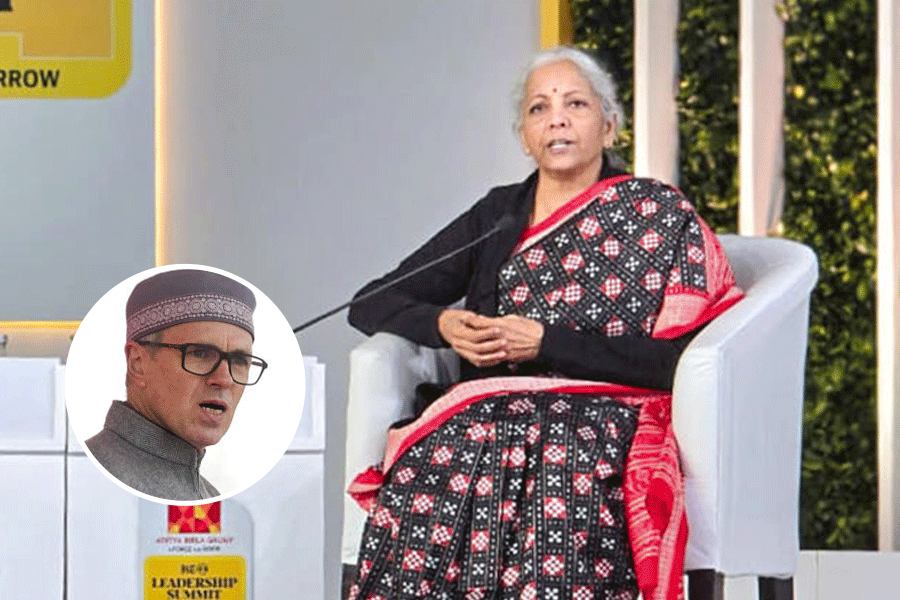By now, Ora Larson recognises what’s happening. “It feels like you’re shaking inside,” she said. “I’m speeded up. I’m anxious.” If someone asks whether she would like a salad for lunch, she doesn’t know how to respond.
She has had several such episodes this year, and they seem to be coming more frequently.
“She stares and gets a gray colour and then she gets confused,” her daughter, Susan Larson, 61, said. “It’s really scary.”
Hypoglycaemia occurs when levels of blood sugar, or glucose, fall too low; below 70 milligrams per decilitre is an accepted definition. It can afflict anyone using glucose-lowering medications to control the condition.
But it occurs more frequently at advanced ages. “If you’ve been a diabetic for years, it’s likely you’ve experienced an episode,” said Dr Sei Lee, a geriatrician at the University of California, San Francisco, US, who researches diabetes in older adults.
Ora Larson, 85, has had type 2 diabetes for decades. Now her endocrinologist and her primary care doctor worry that hypoglycaemia may cause falls, broken bones, heart arrhythmias and cognitive damage.
Both have advised her to let her haemoglobin A1c, a measure of average blood glucose over several months, rise past 7 per cent. “They say, ‘Don’t worry too much about the highs — we want to prevent the lows’,” Susan Larson said.
But her mother has spent 35 years working to maintain an A1c below 7 per cent — a common recommendation, the goal people sing and dance about in pharma commercials.
She faithfully injects her prescribed drug, Victoza, about three times a week and watches her diet. She’s the oldest member of the Aqua for Arthritis class at a local pool in St. Paul, Minnesota, US.
So when her doctors recommended a higher A1c, she resisted. “I think it’s a bunch of hooey,” she said. “It didn’t make sense to me.”
“She got a lot of encouragement and recognition from her physicians for controlling her diabetes, staying on top of it,” her daughter explained. “They always praised her ‘tight control’.”
“For someone who’s been so compliant all these years, it’s like they changed the rules.”
In fact, they have.
More than a decade ago, the American Geriatrics Society called for a haemoglobin A1c of 7.5-8 per cent for most older adults with diabetes, and 8-9 per cent for those contending with multiple chronic illnesses and limited life expectancy. (Ora Larson has multiple sclerosis and hypertension.)
Other medical societies and advocacy groups, including the American Diabetes Association and the Endocrine Society, have also revised their guidelines upward for older patients.
Relaxing aggressive treatment can involve stopping a drug, lowering a dose or switching to another medication — an approach called de-intensification.
The advent of effective new diabetes drugs — GLP-1 receptor agonists and SGLT2 inhibitors — has further altered the landscape. Some patients can substitute these safer medications for risky older ones.
But the new drugs can also complicate decisions, because not all older patients can switch — and for those who can, insurance companies may balk at the new drugs’ high price tags and deny coverage.
So de-intensification is proceeding, but too gradually.
A 2021 study of Medicare beneficiaries with diabetes, for instance, looked at patients who had gone to an emergency room or been hospitalised because of hypoglycaemia. Fewer than half had their medication regimens de-intensified within 100 days.
“Nursing home residents are the ones that get into trouble,” said Dr Joseph Ouslander, a geriatrician at Florida Atlantic University, US, and the editor-in-chief of The Journal of the American Geriatrics Society.
Another 2021 study, of Ontario nursing homes, found that more than half of residents taking drugs for type 2 diabetes had A1c levels below 7 per cent. Those with the greatest cognitive impairment were being treated most aggressively.
Dr Ouslander has calculated, based on a national study, that roughly 40,000 emergency room visits annually resulted from overtreatment of diabetes in older adults from 2007 to 2011. He thinks the numbers are likely to be much higher now.
For 15 years, Dan Marsh, 69, an accountant in Media, Pennsylvania, US, has treated his type 2 diabetes by injecting two forms of insulin daily. When he takes too much, he wakes up at night with “the damn lows”, and needs to eat and take glucose tablets.
Yet his A1c remains high, and last year doctors amputated part of a toe. Because he takes many other medications for a variety of conditions, he and his doctor have decided not to try different diabetes drugs.
With all the new options, including continuous glucose monitors, “figuring out the optimal treatment is becoming more and more difficult”, Dr Scott Pilla, an internist and diabetes researcher at Johns Hopkin, US, said.
Bottom line, though, “older people overestimate the benefit of blood-sugar lowering and underestimate the risk of their medications,” he said. Often, their doctors haven’t explained how the trade-offs shift with older age and accumulating health problems.
Ora Larson, who carries chewable glucose tablets with her in case of hypoglycaemia (fruit juice and candy bars are also popular antidotes), intends to talk over her diabetes treatment with her doctors.
It’s a good idea. “The biggest risk factor for severe hypoglycaemia is having had hypoglycaemia before,” Dr Lee said.
“If you have one episode, it should be thought of as a warning signal. It’s incumbent on your doctor to figure out, Why did this happen? What can we do so your blood sugar doesn’t go dangerously low?”
NYTNS










